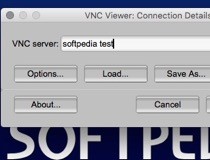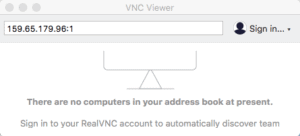
- #Tigervnc viewer for windows 7 install#
- #Tigervnc viewer for windows 7 software#
- #Tigervnc viewer for windows 7 password#
- #Tigervnc viewer for windows 7 download#
The next prompt will ask for the VNC password you chose when you set up the VNC session. First, you will need to provide your UW NetID password. Once you’ve filled in all the fields, hit the “Connect” buttonĪfter pressing the Connect button, you will be asked for two passwords.“SSH User” is your NetID – if you leave this blank, you will be asked for it right after the next step.“SSH Server” must be the name of the server you started the VNC server on (.edu in this example).You must check the box “Use SSH tunneling”.For “Port”, use the port number from steps 3 and 4 of the previous section (e.g.For “Remote Host”, use either “localhost” or “127.0.0.1”.Launch TightVNC’s Java Viewer, then do the following:
#Tigervnc viewer for windows 7 software#
The ECE Linux Lab machines require you forward your VNC session over SSH, which is why we only support use of the TightVNC Java Viewer – that software can manage SSH forwarding automatically. With your VNC session now running, you can now connect to that hostname and port number using TightVNC. If it tells you the display is “:3”, you’d need to use port 5903 and so on. VNC ports start at 5900 – so when TigerVNC refers to “Display :2”, the port number VNC maps to that display is 5900 + 2 = 5902.

Note that VNC passwords must be 8 characters or less – if you type a longer password, everything after character eight is ignored. Set a VNC password by running vncpasswd at the command prompt.Open your terminal program and connect to one of the Linux Lab systems using SSH.If you’re not sure of the name of the machine to which you’ve connected, use the hostname command:.In the examples below, .edu is being used (and the example user’s NetID is nemo). The Mac has one built-in – it’s located at Applications -> Utilities -> Terminal. Terminal emulator – you will need a terminal to run SSH.Unless you are physically on campus and using a wired ethernet connection, you will not be able to connect remotely to our Linux machines without Husky OnNet.
#Tigervnc viewer for windows 7 download#
Be sure you download the Java Viewer from that page, not the Windows version or anything else. The VNC software unfortunately does not appear to be compatible with other Java engines. The following software is required – it works on both Windows and macOS: VNC sessions will not start if your account is over the disk quota. The ECE Linux Lab systems have VNC software installed. You may use any of these in your xstartup file.VNC ( Virtual Network Computing) allows graphical programs to be run remotely with the ability to reconnect to that session should the network connection fail. usr/share/gnome-session/sessions will have a bunch of.

#Tigervnc viewer for windows 7 install#
Install vnc4server sudo apt-get install vnc4server Vnc4server is great, and up and running finally! Most people suggest using x11vnc, which does work out of the box but does not support multiple users. I'm posting this because I spent a lot of time trying multiple things to get vnc4server up and going on the Ubuntu 11.10 system.


 0 kommentar(er)
0 kommentar(er)
